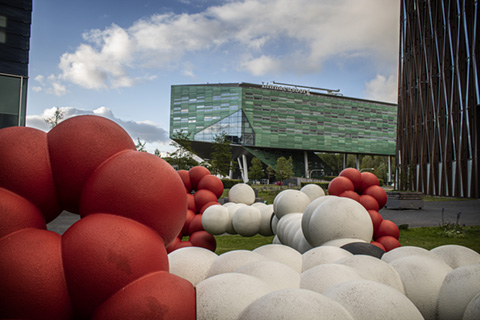
One breakthrough after the other
How does the Stratingh Institute do it?
Seven prestigious ERC grants received over the last four years.
Six scholarships awarded by research financier NWO.
Twenty-eight articles published in Nature, Science, or similar journals over the past two years. Last summer, it was even six articles in one week.
The Stratingh Institute for Chemistry is probably not the only department at the university that’s doing well, but it’s undeniable that it leaves other UG research institutes in the dust. The institute, which includes Nobel Prize winner Ben Feringa but does not in fact belong to him, consists of seventeen research groups that all focus on entirely different things.
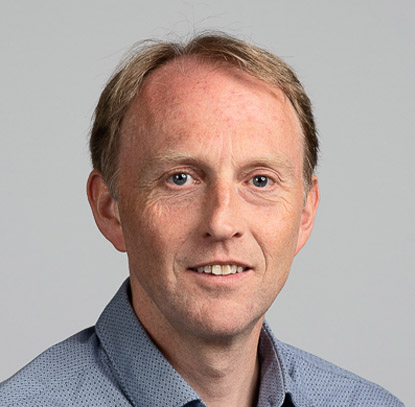
Sybren Otto
Creates life in a test tube
There’s the Walvoort group, for instance, which studies sugar in breast milk. Or the Otto group, which is trying to create life in a test tube. The Browne group, which mainly studies the way complex molecules react. And then there’s the Feringa group, which, in addition to developing applications for their famous molecular motors, is also trying to solve one of the biggest riddles in chemistry: why does each molecule have a dextrorotatory version and a laevorotatory version?
Pressure
‘In all these groups the bar has been set really high’, Wesley Browne explains. ‘There’s all these really smart people, performing on a very high level, that create a pressure to perform well. Not because they expect you to get that ERC or Nature publication – nobody criticises you if you don’t – but because you yourself want to keep up.’
But it is not easy. You might think a Nobel Prize winner’s colleagues benefit from all the attention, but nothing could be further from the truth.
Browne and other people who work closely with Feringa even talk of a reversed ‘Feringa effect’. ‘We had a lot of problems getting grants, because everything was ascribed to Ben. To the outside world, it’s like Ben has this big empire of people working for him. But the reality is that Ben doesn’t have anyone working for him. He does his own thing, as we all do. And sometimes we work together.’
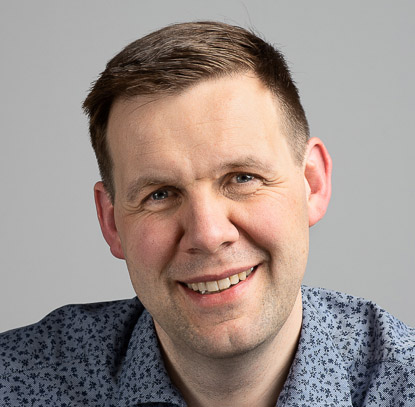
Wesley Browne
Solves chemical sudoku puzzles
Fight
Not even the Nobel Prize winner himself was inundated with funds. ‘It’s different in America’, says Feringa. ‘There, they give the prize winners money and let them go about their research unbothered. But I’ve had to fight to keep this group up and running. Nothing came easy.’
Not that he’s complaining. He loves Groningen and the way research works here. ‘Sure, I’ve had my doubts now and again. What if I’d gone to the US, or England or Germany? But I like it here. People support each other. We enjoy doing science here.’
That might just be the secret behind the Stratingh Institute; it consists of a team of chemists from different fields who utilise each other’s insights without being viciously competitive. These people aren’t afraid to take risks. And they have fun.
New expertise
Anyone who wants to get their foot in the door has to prove they have expertise the institute is lacking. ‘You need everyone in the institute to be as different as possible, but still similar enough so you can talk’, Browne explains. ‘I was hired not because I had been a postdoc for Ben. That may even have worked against me. I had to show that as a spectroscopist, I was different.’
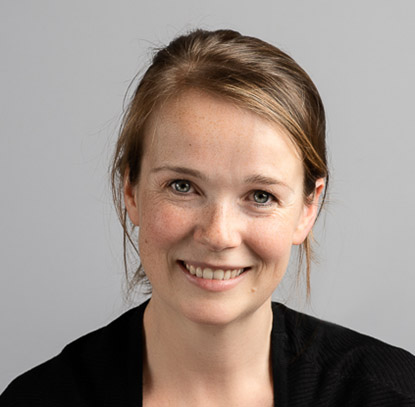
Marthe Walvoort
Researches healthy sugars
Feringa says this particular culture was introduced in Groningen by his mentor Hans Wijnberg, who picked it up in the United States. ‘Wijnberg wasn’t afraid of anyone; he was always on the lookout for new things and he was particularly competitive. I remember I went to him about a project when I was a student. He said it wouldn’t be easy, but that we’d try our darndest to make the Americans jealous! The project failed completely, but that was no problem. He had this attitude that said: let’s just go for it.’
The group has a name for it: the Friday afternoon experiment. They’re so-called ‘wild’ experiments, borne out of pure curiosity, that might lead to unexpected results. ‘Sometimes students come to me with an idea for an experiment like that, and they say: “What if it fails?”’, says Nathalie Katsonis, who returned to the Stratingh Institute after nine years at the University of Twente. ‘I ask them: “But what if it works?” I wish all my experiments would be Friday afternoon experiments.’
Constructive
While the competition in the US or UK might reach unhealthy levels, the atmosphere in Groningen is friendly and constructive. ‘The Stratingh is a safe environment’, says Walvoort. ‘There’s always someone willing to look over your grant application, or help you prepare for an interview.’ That’s kind of remarkable, really. ‘In the States, colleagues are so competitive they can’t stand to see each other succeed.’
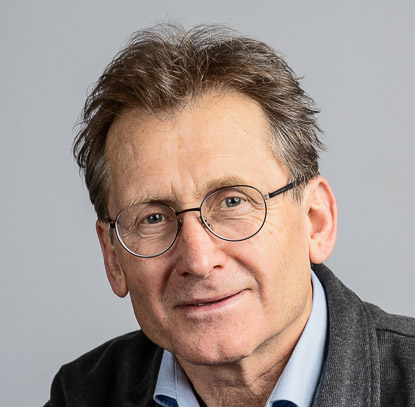
Ben Feringa
Builds molecular motors
They also share machinery. When Sijbren Otto returned to Groningen from Cambridge, he intended to purchase a mass spectrometer. But he didn’t need to: the lab already had one. ‘In Cambridge, I did my electron microscopy in Groningen with Mark Stuart. Not because they didn’t have a machine where I was, but because there was simply no opportunity for me to use it.’
They also have work meetings every Thursday morning. This meeting, which has taken on legendary status, was first organised fifty years ago. Every single person at the institute, from professors to master students, is obligated to attend. The meeting starts at exactly half past eight in the morning. In front of approximately 140 people, students or PhDs talk about their research, after which everyone participates in a discussion round. ‘It’s probably the presentation that people fear the most’, says Browne. ‘These people want serious science and if you don’t deliver, you’re in for a hard questioning session. It’s setting the bar very high and it pushes people to reach that level.’
They tried to reproduce it in Twente, says Katsonis. ‘But it never worked. When professors don’t join, students don’t feel it’s that important. Or when participants don’t ask enough questions, so you don’t get a lively discussion. It’s not enough to simply organise the thing.’
Cross-pollination
At the Stratingh, the meetings are essential to create a community, says Feringa. ‘The students learn how to present, but I also learn about what Marthe or Sijbren is doing. I’ll be like, oh, they’re using that technique to solve their problems, or Adri Minnaard has an issue that we might be able to help with. That kind of cross-pollination is really important.’
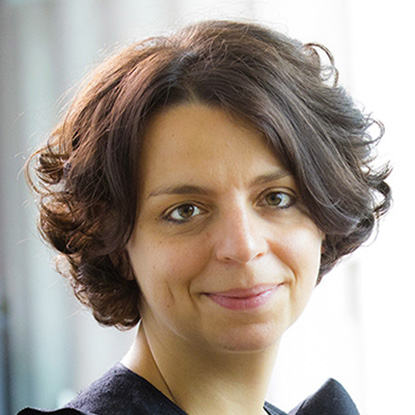
Nathalie Katsonis
Explores the mystery of movement
It also means they’re raising students in an environment of excellent science, which will benefit them down the road. ‘Not fencing them in’, Browne calls it. ‘We need good, passionate PhD students, so we make them!’
Has the Nobel Prize done nothing for the institute, then? Or has it only led to Ben Feringa being busy and unavailable most of the time? Not quite, says Otto. ‘Before Ben won the Nobel Prize, people were like: Groningen? Why would anyone want to work there? But now we’re quite popular.’
Recognition
Browne also considers the recognition they get a positive thing. He feels people in Groningen don’t like to make a fuss about themselves and their accomplishments. ‘But we are a top 100 university and chemistry is top 50. It’s not just Stratingh, but also part of the Biomolecular Sciences and Biotechnology Institute, the Zernike Institute and so forth.’ He actually doesn’t think that worked in their favour, however: ‘What interest have UG or the faculty in helping you when you’re doing everything right?’
But that, he says, is over and done with now. ‘We have this thing that sets us apart from everybody else. We don’t have to ask for more recognition. We have enough.’

Sijbren Otto
Creates life in a test tube
For ten years, Sijbren Otto’s research has focused on one of the most basic questions: how to create life.
To answer this, he’s been trying to create artificial life in a test tube. He works with ring-shaped molecules that stick together, forming a tubular structure. After a while, this tube breaks, which allows new molecules to attach themselves; this is how they reproduce.
By using two types of building blocks rather than just one, he then discovered this created other rings, which responded differently to their environment: he had created a form of evolution.
Another spectacular development took place in June. In two articles published in Nature Catalysis and Nature Chemistry, Otto proved that his molecules have a metabolism. This means they can ‘eat’: they can turn substances in their environment into materials that help them grow.
What’s next? ‘If we can get the replicators to catalyse a material that makes compartments, that would be the third pillar of synthetic life, after replication and metabolism’, he says.
These compartments are essential. ‘If the replicators make food, they need a way to keep it with them. You don’t want someone else who didn’t do anything to profit off your work. Besides, when everyone profits, there’s no evolution.’
He thinks small drops of coacervate might help to form the compartment. But until then, he’ll continue to try and manually add compartments to his replicators. Once he succeeds in that, he’ll take a step back and figure out how to make the molecule create them themselves.

Wesley Browne
Solves chemical sudoku puzzles
Wesley Browne is an enabler, he says. His work – as a spectroscopist – is looking at chemical reactions, so he can find out why and how they happen. But to do that, he and his team need both the right expertise and instrumentation.
That may sound self-evident, but Browne and his people have specialised in skills that have largely disappeared. ‘There are very few people left that have developed the skill to look at reactions. You could say that I do chemical sudoku puzzles.’
It also means that he works with pretty much everyone in the Stratingh Institute. ‘And when I help my colleagues, I also develop the skills to solve my own problems’, he says. He worked with Sijbren Otto on his self-replicating molecules, with Ben Feringa on molecular motors, ‘but also with dentistry on a project looking at whether artificial teeth undergo phase transitions when used’.
The most exciting project of this moment? ‘Watching paint dry’, he smiles. ‘We look at these resins that are used inside oil tanks, to replace the cobalt and styrene in them.’ Both cobalt and styrene are very unsustainable reagents, but they do make for an extremely robust coating. ‘We have to get one that is not better, not worse, but exactly the same’, says Browne.
He loves the complexity of these issues. ‘If you change one thing, you change several things. Just when you think you know what’s going on, you do a couple of experiments and realise that actually, you don’t know. It’s very challenging.’

Marthe Walvoort
Researches healthy sugars
Marthe Walvoort is fascinated by sugar. Two different types, to be precise: healthy sugars like the ones in breast milk, and pathogenic sugars that are used by bacteria to cause an infection.
Very little research has been done on sugar. No one really knows how many types of sugar there are. No one knows what these important sugars even look like. ‘They’re often compared to other biopolymers like DNA or proteins, but the molecules those polymers consist of are much simpler than sugar molecules’, says Walvoort. ‘They can also be attached to each other in countless ways, and they can attach themselves to proteins and fats.’
She became interested in the sugars in breast milk when she was breastfeeding her first child. What if she could replicate this super healthy substance and add it to powdered milk, for example? That’s exactly what she’s currently trying to do.
She’s taken the first step: a few years ago, she published the structure of the first molecule she changed. This molecule was recently subjected to tests. ‘In Wageningen, they tested it to see if the gastrointestinal tracts broke it down’, she says. ‘The UMCG is checking to see if it will bind to bacteria, which is one of its healthy effects. If the bacterium binds to the sugar rather than to you, it will be flushed right out.’
She’s also trying to figure out how to prevent bacteria from creating pathogenic sugar proteins. ‘They’d survive, but they would no longer be able to bind to anything.’ The advantage here is that while antibiotics destroy bacteria, which means there’s a lot of pressure on them to become resistant, this method could circumvent that problem entirely.
But that’s something that won’t happen until the far, far future, she says. ‘We only just found out how one type of bacterium creates that sugar protein.’ It’s fascinating. It’s extremely important. But it will be a while.

Ben Feringa
Builds molecular motors
The whole world knows Ben Feringa as the man who made molecular motors: special molecules that spin under the influence of light. He even made one that can spin in four places, turning it into a minuscule four-wheel drive.
Feringa and his group had been working on this revolutionary research for thirty year. And in 2016, it won him the Nobel Prize. It all started with a molecule that almost accidentally made a half turn in 1989. Now, they’ve become super-fast motors that spin ten million times per second.
Right now, he’s mainly focused on all the ways to use the motors, for example by making moving porous materials. ‘The motors would be able to change how porous the material is. You could put something in which then gets removed when you turn on the motors. It’s really exciting.’
But that’s not all that Feringa does. There’s also his research into environmentally friendly coatings. ‘Together with AkzoNobel, we just created a coating out of biomass – sugar – and its characteristics appear to be as high-quality as the materials that are currently being used. We use light and oxygen for the sustainable chemical conversion.’ He recently published the study in Science Advances.
Together with the nuclear medicine department at the UMCG, he’s been working on improving imaging techniques to find tumours. He’s also been on a quest to create smart medications. ‘Like an antibiotic you could turn on and off using light’, he explains. ‘We hope that bacteria fail to become resistant to an antibiotic like that. We’re not remotely there yet of course; right now it only works in cells. But that’s what’s so exciting: making smart medication.’

Nathalie Katsonis
Explores the mystery of movement
One question lies at the heart of Nathalie Katsonis’ research: how is it that we move? It’s research that may have been inspired by the work she did as a postdoc in Ben Feringa’s group many years ago, but that has been heading in its independent, original direction long since. ‘Movement’, Katsonis says, ‘is the hallmark of life. We teach our children that when something moves, it is likely alive.’
The funny thing is that the movement we see in our daily lives is powered by molecules that in themselves move randomly. So how is it that these nanoscopic entities work together and get us to move our bodies?
To answer that question, Katsonis tries to find out how relatively simple synthetic molecules – molecular switches and motors, but also self-replicating or knotting molecules – create a complex moving system once connected to their environment. ‘A system that has some of the properties of life!’
And she’s getting there, too. In a recent study that was published in Nature Nanotechnology, she showed how molecular motors can create a microscopic vortex. In Nature Chemistry, she published about how polymers can respond to light by twisting and winding like climbing plants, once they incorporate molecular switches in their design. The motion brings about a growing tension in the system until it finally bursts. ‘A powerful motion, like the opening of seed pods’, she explains.
She’s been successful in creating and understanding shape transformation. However, she’s looking ahead. Her big goal is creating objects that can change their physical position. She also looks to implement feedback loops in her systems – so it adjusts, moves back and forth. ‘Just like living things do.’